· 19 min read

There is a recurring theme in the world of sustainability — every few years, stakeholders start calling for it to be left behind and for a new approach to be adopted.
Yes, that’s right. In a world rife with crises in every living system, there is a rising argument that sustainability is not enough, that it’s just about “doing less harm” or getting simplistic efficiency gains. Others say it’s problematic because for years, companies have been doing basic Corporate Social Responsibility (CSR) or triple bottom line reporting (plus now there’s a rise in superficial ESG added to the mix), all whilst increasing their impact on the planet and people. Even worse, some of the criticism and concerns about sustainability assert that it’s now a greenwashing ploy that has lost its direction and meaning — when greenwashing itself is actually proof that people don’t understand the science or technical approaches that sustainability encompasses!
The solution according to the contradictions is to move beyond sustainability and replace it with new terms like resilience, thrivability, and now, regeneration. All of these are important concepts and hold very desirable end goals, but what happens when new frames are created without the context and applicable knowledge to fill them?

We get more diluting and devaluing. We get regenawashing through companies rushing to make claims they can’t back up.
The irony here is that sustainability is the overarching concept that encompasses so many of these ideas; on one end of the spectrum, yes there’s harm minimization and efficiency gains, but on the other end, there’s the circular economy, donut economics and regenerative agriculture. These are all built on the original framework for rewriting the rules of production and consumption so that we get to a better future with the intent to not make the same mistakes of the past. Movements build and evolve over time; they are an emergent outcome of the system that they exist within.
Sustainability is not just an abstract concept of “doing things better” or “doing less harm.” It is a set of scientific approaches and technical skills that have been tried and tested over decades of progressive scientific and creative work to find practical ways of redesigning systems and products to be more ethical, equitable, and yes, sustainable. Meaning that the actions taken today to meet our needs are not at the expense of current or future generations and the planet as a whole. This has always been about getting to a destination of full systems regeneration and restoration, where humans give back more than we take from the natural world. But this can only be reached by a clearly defined pathway — which is exactly what science-based sustainability offers.
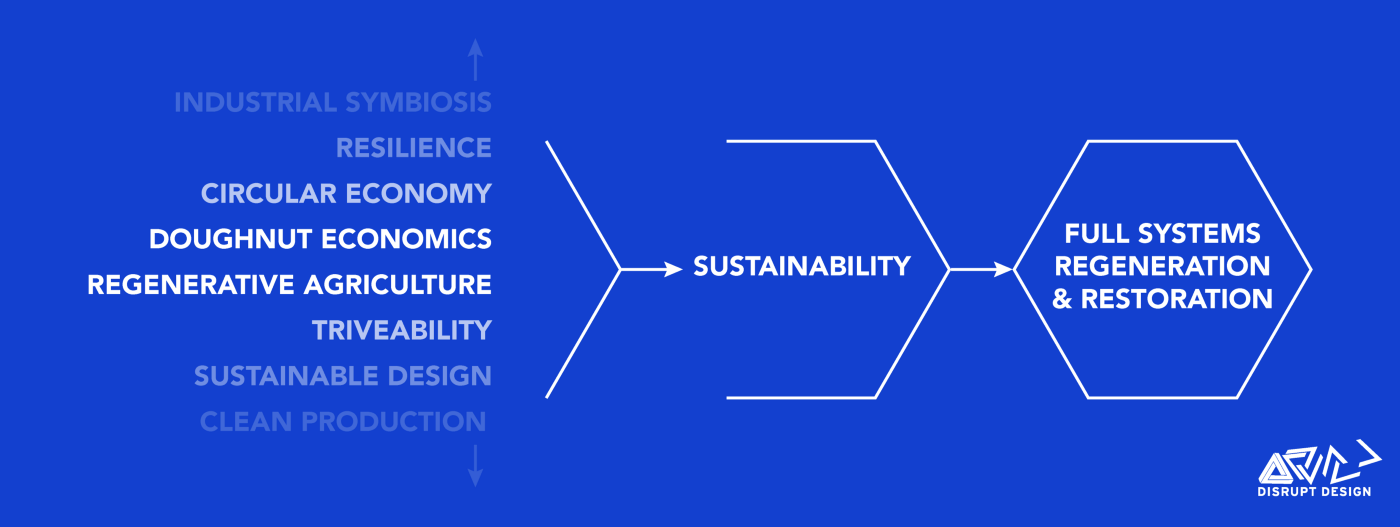
In this article, my goal is to shed more light on what sustainability is and isn’t, why now is not time to give up on it, and how we can and should use it as the pathway to regeneration.
What sustainability is and is not
One of my immediate concerns about abandoning sustainability is that we’ve never established a common vernacular about what it is and what it is not. Sustainability used appropriately is not just a buzzword thrown around in meetings and slapped onto products to market their so-called green credentials. It’s about getting to a state of equilibrium and instilling it across all systems so that they are balanced. The human body is a system constantly working towards homeostasis, and nature is a larger version of this. Due to human actions, we have created imbalances that have resulted in big-systems issues such as climate change. To address the crises created by our collective actions, we first must work to create the balance needed for a safe operating system. This is where sustaining systems come in; with the unsustainable demands we’ve placed on nature, we must first rectify this and work within nature’s limits.
Whilst sustainability is a word that can be used to describe how something could be sustained over time, sustainability is a movement that has been growing for the last three decades to help drive us into this more equitable and safe future. It encompasses many fields of scientific and creative exploration, from cleaner production to industrial symbiosis, sustainable design and the circular economy. In short, sustainability as it was first presented in the 1987 Brundtland Our Common Future Report is all about pushing for a disruption of the status quo economy, to one that meets the needs of current generations without adversely affecting the ability for future generations to meet their needs.
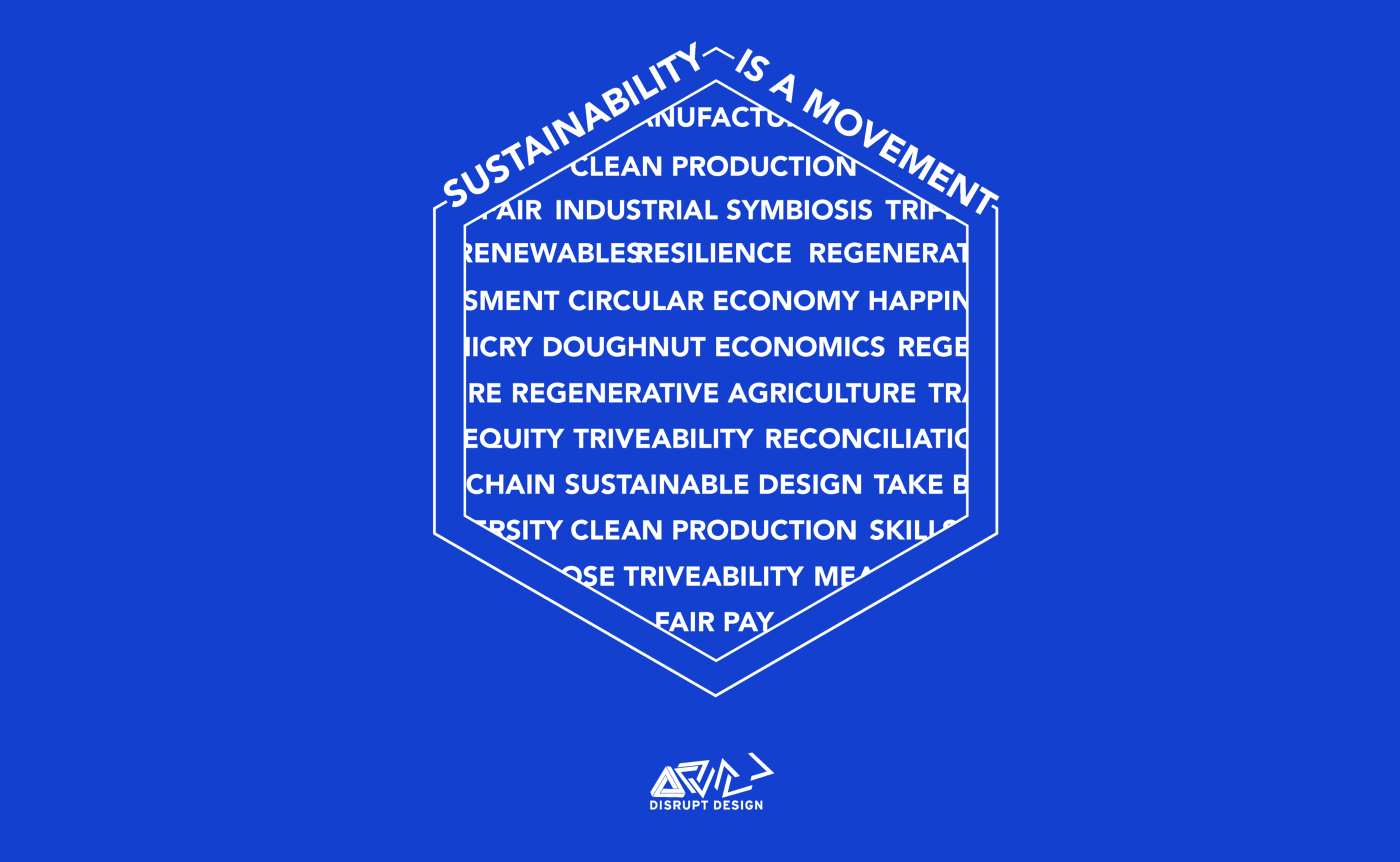
Many of the people in power today, be it in business or government, those with the influence to make real changes (not vested interests in maintaining the status quo), are just starting to understand and prioritize the need to consider the impact of our actions on the planet. They have a limited understanding of the language of life (how nature works to sustain all life and how we are a part of this) and are just starting to learn the vocabulary before they can advance to full-blown conversations and eventually get to fluency in sustainability.
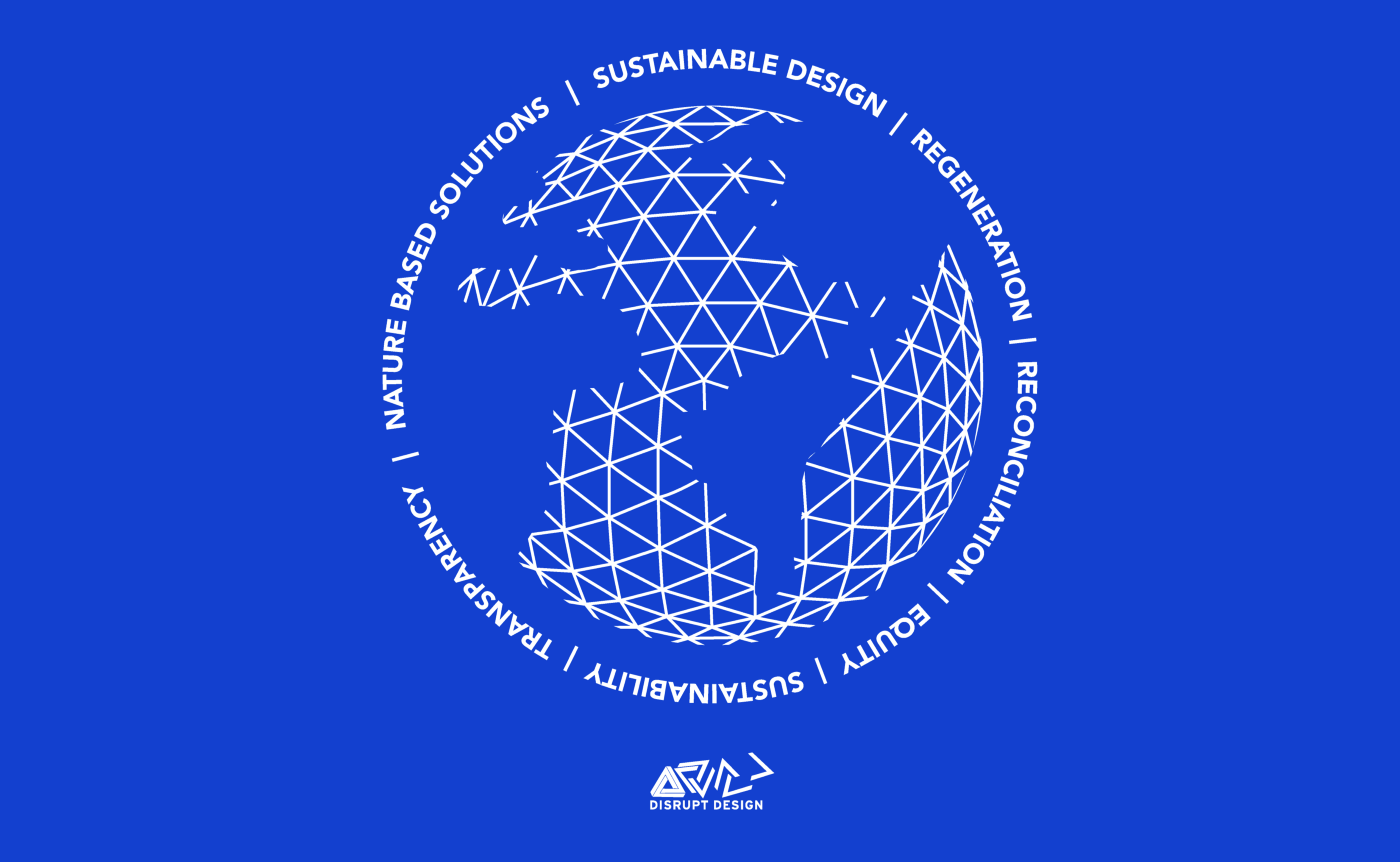
Until we have a common shared language of what it means to take considered and intentional actions to understand and change the negative impacts our economy and consumption habits have on the planet, these conversations will continue to be broken, misunderstood, riddled with hypocrisy and often pointless.
Sustainability as a movement
Sustainability, with everything that it encompasses, is a practical approach to getting to a better future, and in my mind, it offers clear directions to get us to a destination that we know we need to go. But we have barely started the journey. Of the Fortune 500 companies, only 38% have committed climate actions. According to the Circular Gap Report, the world is only 8.6% circular, and most companies have not come around to the idea that after years of making money from unethical and unsustainable practices, they now have to change what they are doing dramatically to fit in with the demands of a changing world.
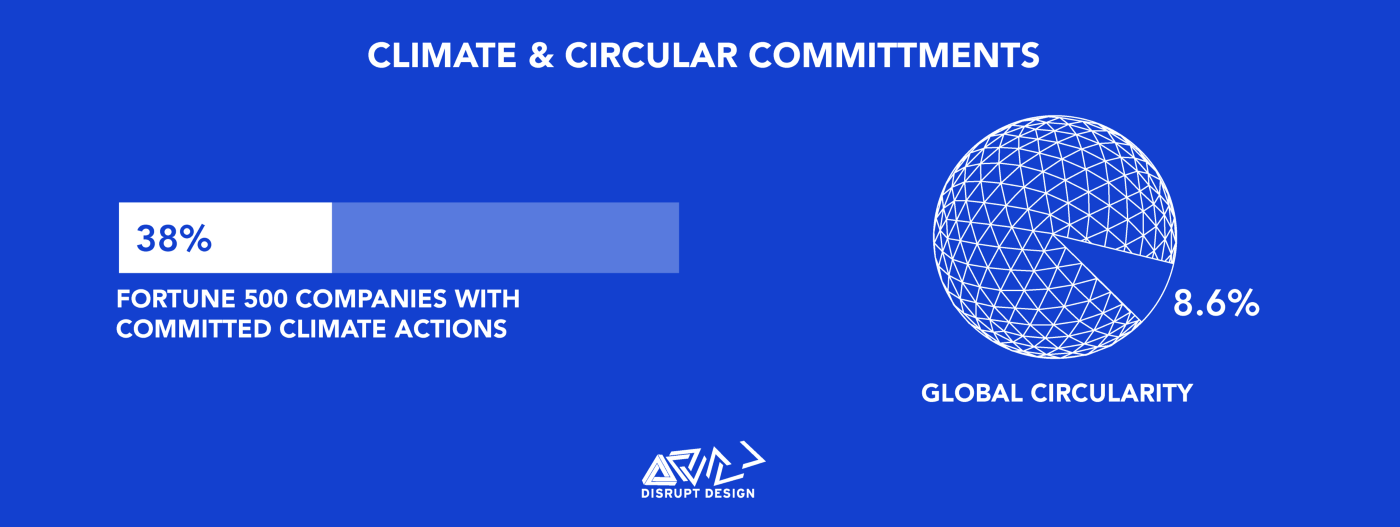
This is why I find it so frustrating when people demand that we move beyond sustainability right now, just as it’s starting to finally get some traction in which we see major companies invest substantial time, resources and capital into significant change. The goal is transformative change, and to get that, we need to go through a process of metamorphosis, which requires stages of regrowth and transformation, in order to get to a completely different end state.
Sustainability as a movement is the process of shifting social values and reorienting away from exploitation as the dominant approach towards a regenerative society, one where we give back more than we take. In order to get to this better state, we have to redesign all of our current processes, systems, services, products, lifestyles and mindsets. This is what the sustainability-as-a-movement crowd has been repeating for a few decades.

The great challenge of our time is to make changes to the way we live, work, and create value. When we establish a common language that can be easily learned and applied by masses of people in all contexts, new practices and ways of engaging with the economy and lifestyles can be normalized. Sharing, reusing, repairing, zero-waste, collaborative consumption, etc. are all cultural shifts that are in the process of becoming mainstream.
There are issues in the framing and application of any idea, but we are still so far away from figuring out how to sustain human society in equitable ways that discarding a tangible approach now will only further delay our progress.
I am under no disillusion that there’s a lot of work that needs to be done; fundamentally, we need to transform our value systems and mindsets if we are to carve a new trajectory away from exploitation and extraction as the core approaches to business and economic growth. But let’s get everyone learning the basics of this new language first, and then we can collectively level up our conversations.
How is sustainability different from the environmental movements of the past?
The lineage of current sustainability mostly stems from the idea that as humans develop and evolve, we should do so in ways that harmonize the social, environmental and economic impacts of our actions (Brundtland Report), instead of hyper-focusing on economic growth, which was (and still is) heavily focused on production and consumption as the primary indicator of success. This approach is known as sustainable development, of which we now have the 17 sustainable development goals laid out by the UN.
The main concept and underlying philosophical drive is that in the pursuit of economic success and domination, humans have messed up the systems that sustain life on Earth. We need to learn how to sustain ourselves equitably within the resources and means of the planet upon which we rely on for survival. This is very different from the environmental movements of the past that were about conserving and protecting nature, often for human gains (for example, nature reserves were originally set up for wealthy people to go hunting). The shift to sustainability came about right as we started to extract and use resources at a faster rate than Earth could replenish them, and this overshoot is what we must rectify as fast as possible.
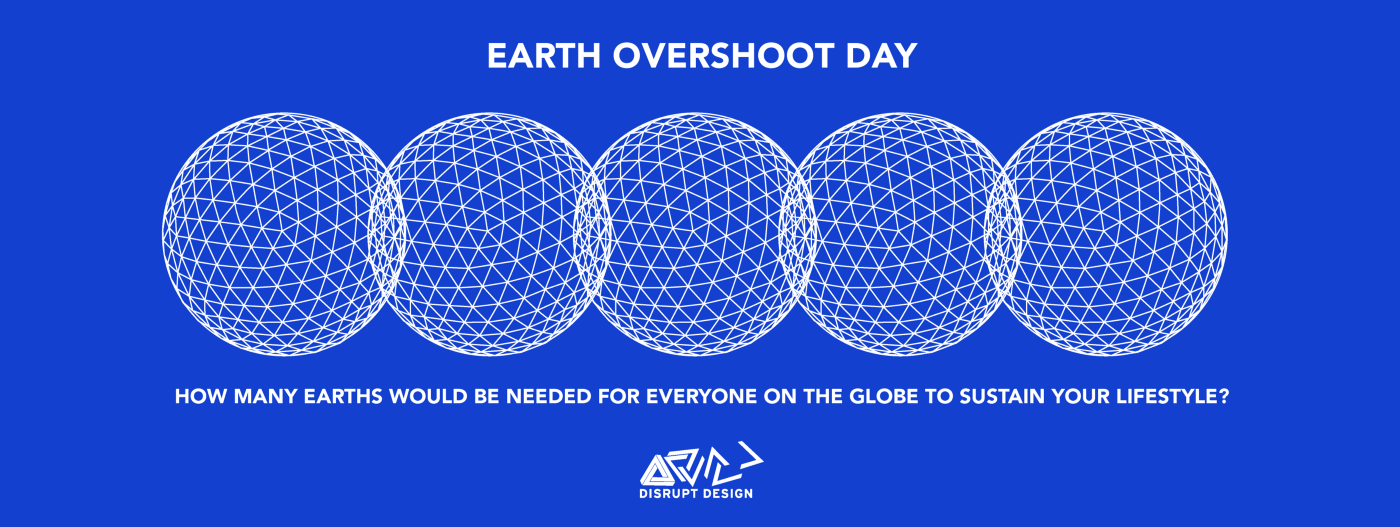
If environmentalism was about protection, sustainability is about survival, and regeneration is about thriving. This is a process of societal transformation.
Most of the mainstream systems and solutions we have in place today are not driving us down these paths. And again, without a common language of our interconnected and interdependent relationship with nature, we will perpetuate this idea that we are separate, above and able to control the natural world.
Through our work at Disrupt Design and the UnSchool, we’ve found that even the basic comprehension of what sustainability is — the technical aspects of it, the concepts and core approaches — is not common knowledge in mainstream business, universities or society at large. People often conflate climate change and sustainability as the same thing. Climate change is a symptom of unsustainable systems, like ocean plastic waste is a result of our addiction to disposability and convenience or deforestation is linked to perverse economic incentives. These system failures desperately need to be addressed through the redesigning of our consumption-fueled economic system and collective social practices.
Where did we go wrong with sustainability?
Sustainability is a concept, a movement and a technical skillset, and like anything that is multi-faceted, indeed it has its flaws. There are many different interpretations, framings and applications. It has been abused by those that want to ensure the status quo is maintained, and it’s been applied poorly which has led to misinterpretation, diluting it down to simplistic metrics and a lot of greenwashing.
Even now when I google what people new to this idea would find, I see they would be offered many different incarnations of how we need to change the way we do things, moving from damaging the environment to “protecting it” or even worse, saving the world! (I have expressed in the past that I believe humans can’t save the world, but we can certainly change it.) They will also encounter greenwashing (page two of my search on sustainability offered up BP’s commitments — need I say more than their backfired previous attempts to greenwash when they changed their name to Beyond Petroleum) and more examples of oversimplified interpretations of what it means to take on this great challenge of undoing the damage that a linear, waste-based economy has created.
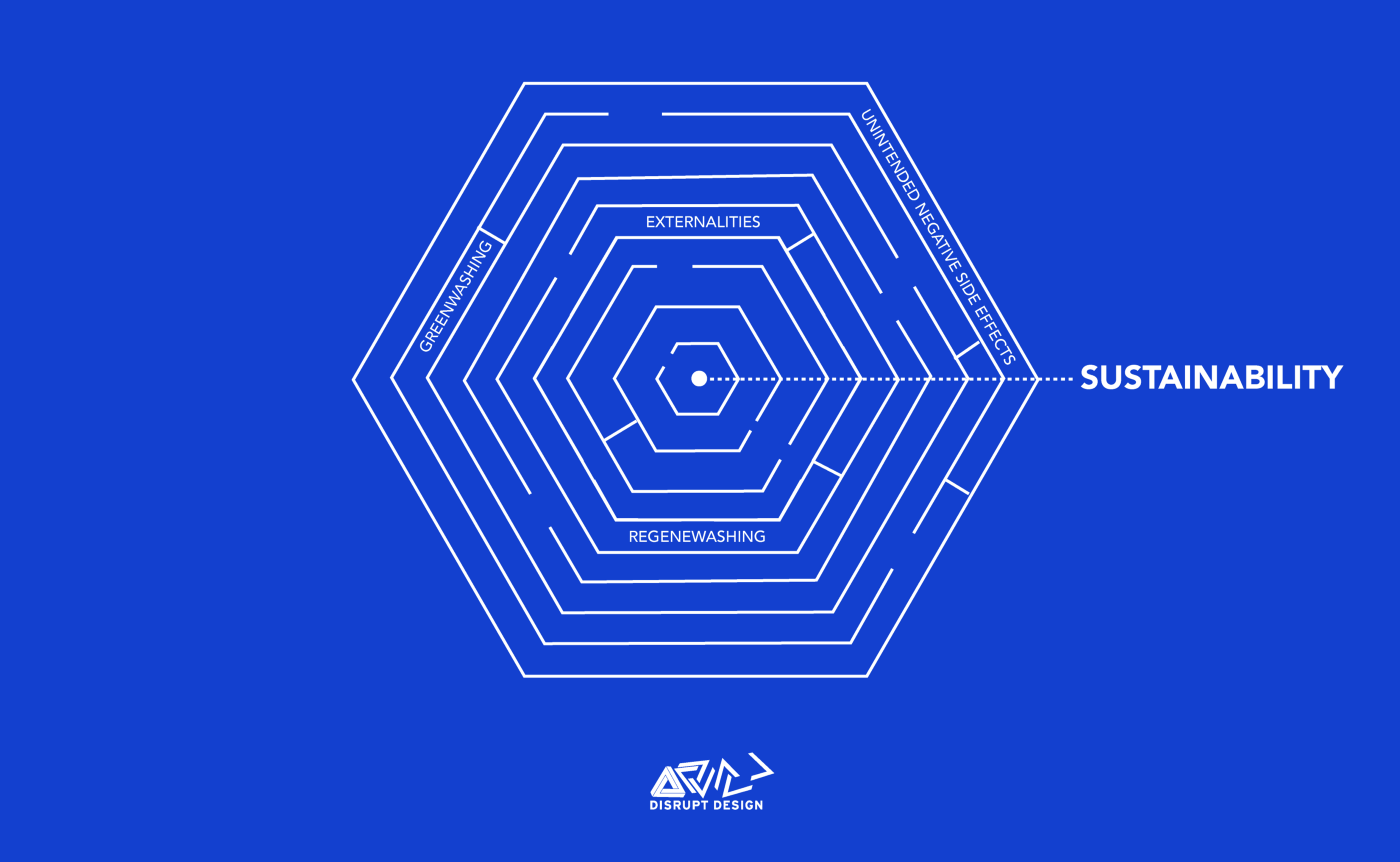
This dilution of sustainability has helped to delay the potential to make change and enabled the status quo to win its quiet war on change, as those who are abandoning it are doing so because it has been tarnished by failed attempts and backlash when it’s not done perfectly. This is the precise reason why we need to recapture the essence of this goal and ensure that regeneration does not fall victim to the same hollowed-out fate.
Despite the problems, I see sustainability as being a critical path in the evolution of our ability to redirect away from our unsustainable world of our own making, into a future that is better than today — a future that is not sustaining the status quo, but which is itself sustainable and regenerative.
How does the regenerative movement fit into this?
When we think about regeneration, the end goal should be equity for all life, not just humans, to ensure that the conditions to thrive are sustained, be it animal or natural systems. For all that we take, we must give back more to replenish and regenerate the systems that we have destroyed in the pursuit of our own anthropocentric progress and development.
The regenerative model is based on the idea that humans, as the dominant force on the planet, learn to be more like the non-human nature systems, learning from the wisdom of life and applying these ideas to the practices of cultural change. A critical principle of life is there is no such thing as waste in nature; everything is broken down and cycled through systems as nutrient flows to aid the continuation and expansion of more life. By learning from nature, we can create industrial processes, cities and products that eradicate the negative externalities currently built into our existing systems.
Instead of making things that add value back to a system, our current linear economic model extracts and processes raw materials from nature, produces pollution and returns negative externalities back to the planet in the form of waste — which then affects all living things in negative ways. Externalities are things not accounted for in the current system and often have negative effects on those that had nothing to do with creating them. Air pollution, landfills, climate change — these all are externalities to our modern economic system.
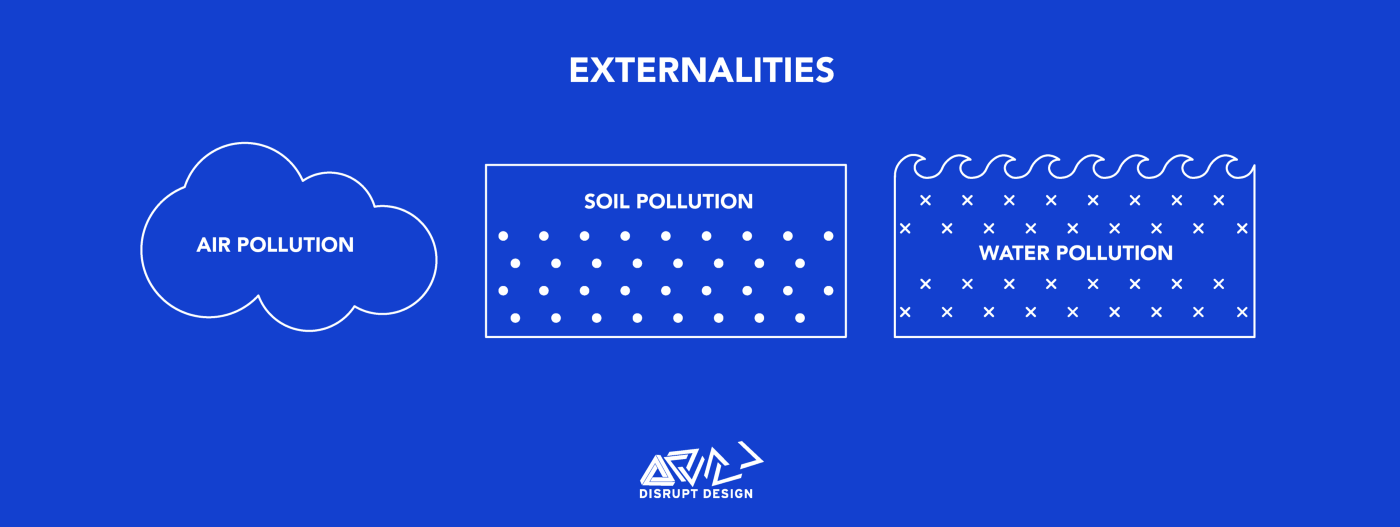
So the idea of being a regenerative force on the planet is a philosophical shift and practical destination to work towards; however, there must be a pathway to regeneration. This involves first uncovering where we have gone wrong, finding what course correction we must make and then actively investing our creative capacity and capital to redesign the products, processes, services and society that we live in.
Now, I keep seeing “regeneration” being used in front of all sorts of industries, the same ones that have grappled and battled with even basic comprehension and mitigation of their impact on the planet. I fear that this rush to be seen as “regenerative” risks devaluing an approach that is born into the bodies and culture of the communities that have long been the custodians of nature — the indigenous communities of the world.
This raises a lot of concerns about the rush to use the term “regenerative” as the replacement for sustainability, not just because it’s becoming its own buzzword that reduces its potency down to the easiest part of the equation for people to replicate it and gain associated benefits, but also because of the types of people who are gaining the credit for this age-old concept.
The original voices in the story of humans living within the means of nature are a massive missing link in the current discussion on regeneration as a business model, leadership approach or design practice — those voices being the diverse first nations that thrived before colonization on nearly every continent on Earth. Indigenous communities make up just 2% of the global population but protect 80% of nature. For centuries, their ideas, voices and bodies have been silenced and exploited as part of the linear system, and now there is a dangerous space of cultural colonization underway, whereby many of the main voices claiming and teaching regenerative practices are those that have benefited from euro-centric colonization and have the pre-established power to claim ownership over these ideas.

Many of the companies profiting from a shift to these practices, laid down in the law of first nations cultures for tens of thousands of years, are being (accidentally?) exploited by the same people. Of course regeneration should be our collective goal, as we must work with nature not against it. But we need the regeneration of cultural equity, reconciliation and reparations as much as we need to reverse our collective exploitation of nature purely for personal and economic gains.
As we enter into a phase of regenawashing, where companies and people rush to co-opt a word that sounds more desirable than the ones that have come before it, we must stop and question who is being exploited yet again by these actions? Whose voices are being silenced by those that have the power to speak loudly and claim ownership over ideas that have long been left out of the conversation? And are we just replicating the same systems we seek to change?
There is no future without equity
There is no regeneration, nor sustainability, without equity.
If the majority of the world’s population is perpetually exploited for the gains of a small percentage of the rest of the world, then there is no equity — therefore no sustainability and certainly no regeneration.
We are addicted to cheap disposable stuff that comes at the expense of other people. Americans and Europeans wanting to buy cheap TVs on a manipulated and constructed Black Friday sale are gaining the benefits of perpetual exploitation of all the people who had to mine minerals, make plastics, assemble the product, ship, drive, store, pack and enslave themselves to an inequitable economic system that is rigged to help certain people at the expense of others. Then, the discarded old TV becomes electronic waste that is often trafficked back to an emerging economy where some poor soul has to break it down and burn it to get some economic value out of it — all while the system is built on denying that for the benefit of a few, the masses of humanity must suffer and the living planet must be ignored.

This is the same for nearly every industry, be it farming, mining, technology or fashion. Exploitation is built into the system.
Don’t even get me started on the billions of enslaved animals that are being force-fed in factory farms so that already calorically-sustained people in wealthy countries can have cheap meat whenever they want it. The current system is riddled with lies, externalities and injustices, and these all fit together. These are the unsustainable systems that need to be completely disrupted.
But to do so, we must reject the idea that sustainability is about sustaining what we already have and instead, embrace bringing the concept of sustainment into our lives. It’s the opposing force to what we have, which is destruction, deterioration and exploitation, and the design decisions of today can help rectify the mistakes of the past.
What will emerge from fully adopting the practice of sustainment throughout society? I believe it will unlock the potential of an equitable and regenerative future. Together we will become fluent in the language of life that has been missing from our education, culture and conversations for too long. Together we can design a better future for all, but to get going, we need all of you.
Actionists
The need for action from all sectors of society is intensifying at a rapid rate. We are in the midst of many unfolding crises, not just climate, but also ecosystem destruction, plastic waste, air pollution, energy, cost of living and all the other human-created crises. These all require significant redesigning of the economy, at all levels, in order for us to figure out how to reverse the damage that the mainstream status quo has created. This requires a daily practice of figuring out how to make products, services, businesses and cultures more sustainable, which means making things that have built-in accountability for the impacts they have on people and the planet across their entire life cycle.
Thankfully, there is a massive change emerging, and major shifts were starting to occur even before the pandemic. In the last two years, I’ve seen some of the biggest companies in the world make ambitious plans for addressing their impacts. Many have reached out and asked for support to start or build upon their transformation. There is growing momentum, and I see some genuine desire to learn and evolve, to yes, start by doing better (as currently, most major companies actively destroy nature with little concern for their impact or feel paralyzed not knowing where to start), with full knowledge that they need to dramatically transform.
There is still a lot of fear, trepidation, confusion and avoidance going on. Greenwashing and simple solutions to complex problems are rife, but missteps should not derail the evolution of progress. They should instead strengthen our capabilities as we learn, evolve and adapt to the changing systems around us.
To be an actionist is to not just demand change, but to apply it, to live it, and to be willing to change yourself. This is perhaps why many of us have a pendulum swinging inside between aspirational goals and everyday actions. While the idea of full systems change and humanity evolving into a regenerative force is the desired destination, I know that to get to any new place, a journey must be undertaken. We can’t (yet) teleport ourselves into a future that we have not yet built, so let’s build it now, day by day. A better future is waiting, and it’s us who will decide if we design the path of sustainability and get to a place of regeneration, or if we will continue to dig ourselves into a place of destruction.
Becoming a regenerative force
Despite all of the pressing issues and counter-forces, I have solid hope for a better future. Actually, I have more than hope — I have actions, provocations and tools that I know will get us there. When sustainability is framed as a set of technical skills and demonstrated processes and then applied at the decision-making level of business, it can dramatically improve the social and environmental performance of the products and experiences that exist within the economy. Maybe it’s a bit boring to have to do the work to get to a better outcome, but everything worth doing requires work.
When I personally talk about sustainability, I am drawing on the work of many before me who have demanded that we do much better — the scientists, activists, artists, leaders and provocateurs who have pushed and prodded at the mainstream and offered ideas and approaches for getting us to a better place, one where we create ethical and equitable products, where we can accept the mistakes of the past and work to undo the damage that they have created. We can figure out how to better distribute power in all its forms and find a pathway to regeneration through the acknowledgment and respect for those that hold the knowledge on how we can get there.
But first, we have to normalize a culture of sustainability and accept that we have to change the way we do everything so that we no longer destroy the systems that sustain us. We need to infuse the knowledge that we are a part of the same nature that we destroy, so that no individual, business leader, or political representative can abscond from the responsibility we each have to ensure that we rectify the errors in our ways.
To have a sustainable future is to ensure that decisions today are beneficial for future generations; it’s about having a holistic comprehension of impacts across the economy and applying the technical skills and resources to dramatically redesign practices to eradicate those impacts.
For me and many others in the movement to design a sustainable future, it’s about redesigning the way we make products, do business, live our lives and treat the planet.
The end goal is not “to sustain what we already have”; it’s to evolve our species to move beyond the status quo of destruction and exploitation, to find new ways of meeting everyone’s needs within the means of the planet. It's about respecting, cherishing and living within natural systems. Once we have established the ability to do that, when we have changed our business practices, cultural conventions, and collective mindsets, then we can give back more than we take — and finally be a regenerative force on a planet that is no longer unsustainable.
This article is also published on Disruptive Design. Energy Voices is a democratic space presenting the thoughts and opinions of leading Energy & Sustainability writers, their opinions do not necessarily represent those of illuminem.






